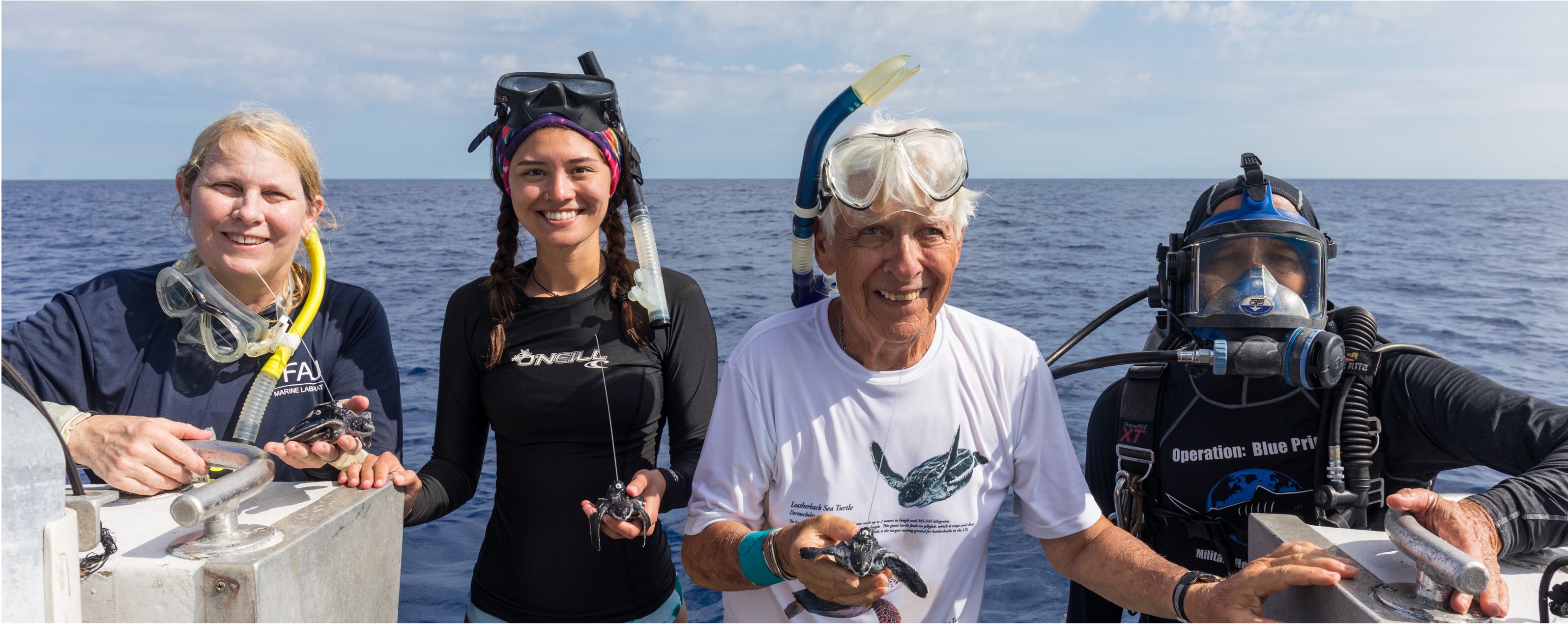
Author: Sam Trail
Date: August 16, 2022
Here at the FAU Marine Science Lab, we have several projects going on year-round! The summer and fall months are especially busy! You can swing by our visitors’ gallery located in the Gumbo Limbo Environmental Complex and see tanks full of young turtles, but where do those turtles go when the research projects are complete?

Our long-term sex ratio and satellite tagging studies require turtles to reach around 120 grams (less than half a pound or about the size of your hand). It usually takes turtles around 2-3 months to reach that size, depending on the time of year and the species.
After their brief stay at the lab, it is time to let those turtles live out the rest of their lives in the Big Blue! Upon hatching from their eggs, hatchling sea turtles have a yolk reserve that they use to climb up through the sand and emerge from the nest, the sprint to the water and swim out to the Gulf Stream current as quickly as possible without stopping. Their leftover yolk is the nutritional reserves that fuel this journey –– sort of a ”brown bag lunch” left by mom. This initial sprint into the ocean lasts more than a day and is termed the “frenzy.” However, after keeping our turtles for a few months, they no longer have that yolk reserve and their behavior is that of a turtle that is already offshore, so we need help from a boat to get them to their Gulf Stream destination!

The fast-moving Gulf Stream current runs quite close to the coast of Southeast Florida, and on any given day, could be about 5-15 miles from the shores of our beaches. When our turtles are ready for release, we enlist the help of local entities to get our turtles on a boat offshore. The U.S. Coast Guard (pictured left and right), Jim Abernethy’s Scuba Adventures (pictured above), and Gumbo Limbo Nature Center have all been a part of our Turtle Transport team for several years! Thanks to these partners, we are able to safely return our turtles to the environment where they would naturally be during this life stage: the open ocean. Our loggerhead and green turtles like to hide in floating mats of sargassum, while our leatherbacks prefer the open, sargassum-free areas of the Gulf Stream. Our partners help us locate these areas for release, giving our turtles the best chance for survival.
Thank you to all of our turtle transport partners! We could not do this work without you.